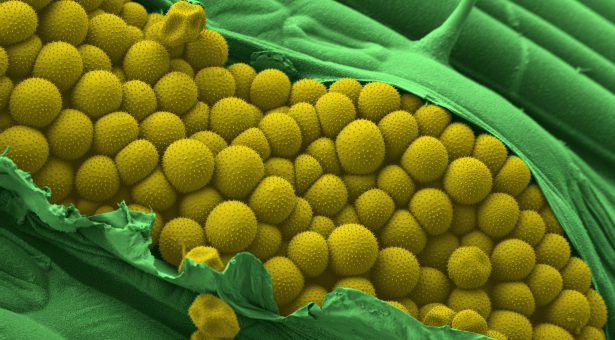
Researchers have found a gene in wheat that acts to promote rust fungal infection.
Disrupting the function of this gene provides resistance to two of the most economically damaging diseases of wheat worldwide – yellow and stem rust.
As rust fungi attack, they turn on and off particular genes in wheat to prevent the plant from defending itself. When successful, this stops the plant from killing the invading fungus and ultimately leads to severe plant disease.
In a new study that was published in The Plant Cell, researchers identified one wheat gene they called TaBCAT1 that was turned on early during a successful yellow rust infection. Deleting this gene in wheat mutants severely reduced infection, telling them it was important for rust fungi to cause disease.
Dr Pilar Corredor-Moreno, the first author said: "We were amazed to see that removing just this one gene in our mutant plants caused them to alert their defence responses even before they were under attack. This likely helped the plants to give a much speedier defence response, curtailing rust infection before it even had a chance to start."
Further analysis of the TaBCAT1 gene showed that it takes part in the break-down of a particular group of amino acids called branched-chain amino acids. The team also found that the amount of these amino acids was different in wheat plants during successful and unsuccessful rust infections, showing that their amount could be important for the invading pathogen.
Dr Diane Saunders, the corresponding author, commented:, "This study may well have identified an Achilles' heel for rust infection. It will be exciting to explore this gene further with our wheat breeders as a potential new source of resistance to these notorious diseases of wheat that cause severe crop losses across the world."
These discoveries were only possible through close collaboration of the Saunders Lab with our state-of-the-art Bioimaging and Metabolomics technology research platforms and the availability of wheat mutants deposited in the Germplasm Resource Unit. Funding was predominantly provided by the European Research Council and UK Biotechnology Biological Sciences Research Council.
- The full study 'TaBCAT1: ANovel Positive Regulator of Wheat Rust Susceptibility that 3Modulates Amino-AcidMetabolism' is published in The Plant Cell






